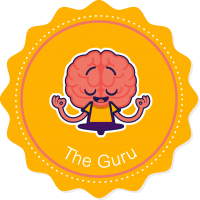There is a variety of scaffolding strategies that can be used in education. Some of these scaffolding strategies are especially engaging and fun-filled for the students.
- Tap Into Prior Knowledge
Students come to school with the experience and knowledge of many different topics. By connecting prior life experiences with new knowledge, teachers can help students understand new details more quickly. Students grasp and retain new knowledge more easily when they can relate it to something they already know. Following are some of the ways to use prior knowledge as a scaffolding strategy:
- Teachers can ask students to share past experiences, ideas, and feelings about the concept or content taught in the class and connect and relate it to their life.
- A teacher can also offer suggestions and hints, leading students to the connections. After some time students will start to understand the concept as their own.
- Entry/exit tickets can be used as a method of classroom instruction. The instructor will distribute an index card with a discussion question or prompt on it for the learners to reflect upon or answer within a specific time frame.
Teachers must build on the students’ understanding of a topic, rather than jumping straight into complex problem-solving right away. This helps them create a strong foundation for the rest of the topic!
- Give Time to Talk
Everyone needs time to show understanding. It can be helpful to give students time to understand what they have been asked before actually using their knowledge for independent working. Following are some of the ways to apply wait time as a scaffolding strategy:
- Teachers can put students in small groups or pairs to talk with one another.
- Teachers can pause and wait after asking a question, so that students can think and then give any answer. This silence can make students anxious at first, but students will gradually start to participate.
Wait time offers a great opportunity for learners’ brains to organize their complex thinking and reflect on after a question has been asked. In fact, increasing wait time will offer an opportunity for the students to understand a question and compose an answer—allowing time for brain processing.
3. Modelling
Guiding students how to perform a task by first performing it by the teachers themselves can be a useful teaching strategy. Teachers can teach students while walking or while talking to them about the task. Teachers can also utilize a small group of students model for other students. Following are some of the ways to use modelling as a scaffolding strategy in education.
- A fishbowl activity can be used, by selecting a small group of students to stand in the middle and the rest of the class surrounds it. The fishbowl, or students in the middle, performs a task, model how the task is done for the bigger group.
- Teachers can show the final product or outcome of a task, before asking students to perform the task. For example: teachers can show a model essay and a criteria chart or rubric before giving the task of writing a persuasive essay. Teachers can teach students through every step of this process using the model of the final product in hand.
- Teachers can use think alouds, to model their thought process as they design a project, solve a problem or read text. Since children’s cognitive skills are still in development phase, so it is essential for them to see developed, critical thinking.
Modelling can be a useful scaffolding strategy, which teachers can easily use to teach any topic in the classroom.
4. Pre-Teach Vocabulary
Scaffolding is important across each educational subject area. An area where students may require additional scaffolding is vocabulary building. Hence, prior to performing a complex task teachers can share particular vocabulary elements that may offer challenge. Vocabulary building can be performed in various ways prior to performing a task, including:
Introducing the words to children through pictures or any other thing they know and are interested in.
Using metaphors and analogies, and inviting students to draw a picture or create a symbol for a specific word.
After performing any of the above, students can use dictionaries to compare with those explanations they have already discovered by themselves.
Pre-teach vocabulary scaffolding strategy can be used for words that are difficult for the students to comprehend from the context. If students are not provided with the sufficient support to understand difficult vocabulary items, there is a possibility that they may lose interest in the class.
5. Visual Aids
Visual scaffolding is performed through words and images that can be viewed as well as heard. This provides an excellent way to give comprehensible information to the students. Following are some of the ways to use visual aids as the scaffolding strategy.
- Graphic organizers, charts and pictures, can all be used as scaffolding tools. Graphic organizers help children visually organize information, illustrate ideas, and understand concepts such as cause and effect and sequencing.
- Showing students a video, or providing with a concrete object to begin a new lesson. For example, while teaching about rocks and stones, it is useful to place different types of stones on tables for the learners to see and touch.
The above discussion provides some of the most effective ways to use scaffolding strategies in education. Teachers must provide a lot of support at the start of the scaffolding process. Then, they remove their support in stages. This sequential decrease in the degree of support makes up the scaffolding process. At each step, this process gives confidence and ability to learn a new concept or skill. Each classroom has a different type of Scaffolding, depending upon the task, students’ prior knowledge and the resources available for learning.







